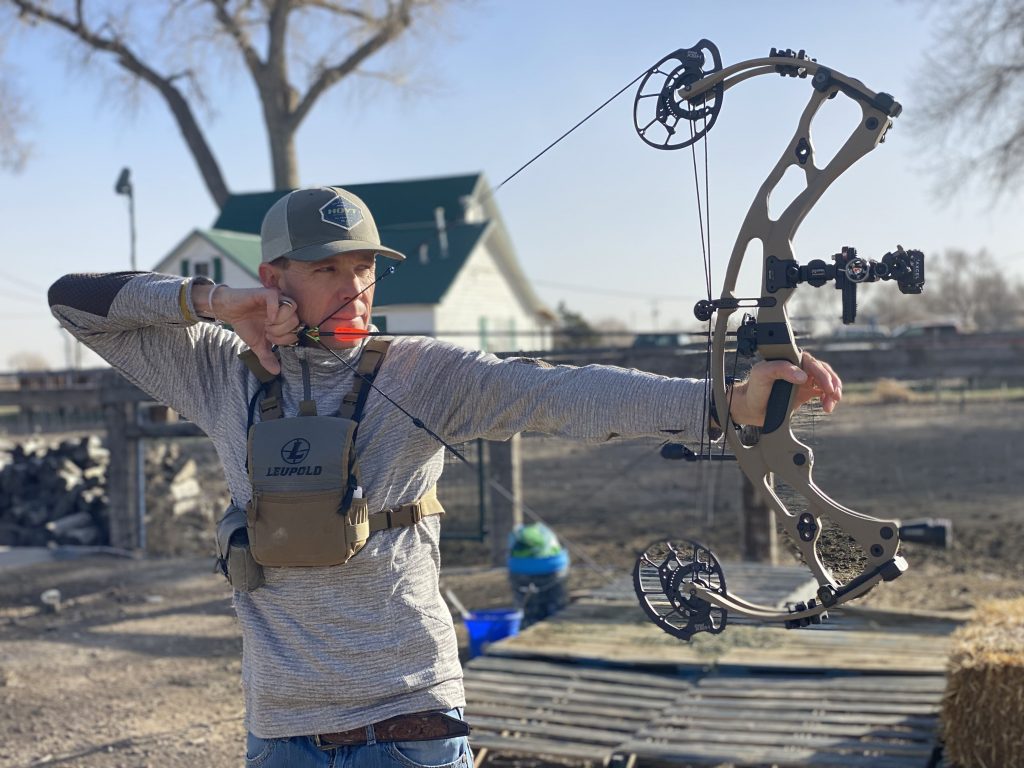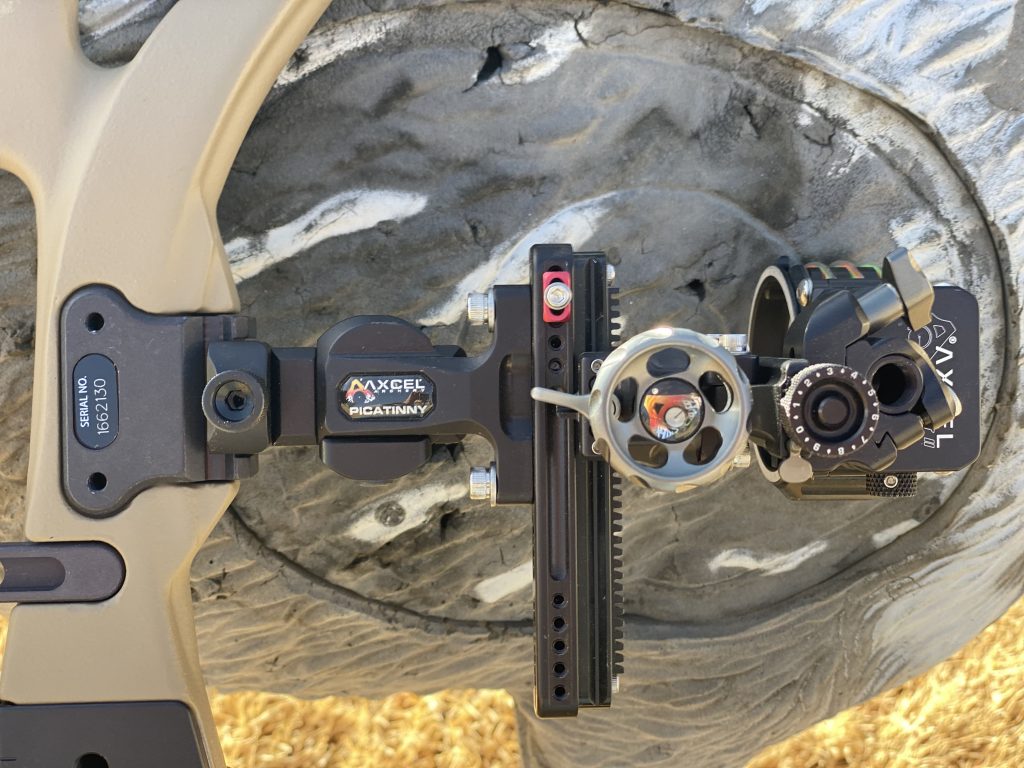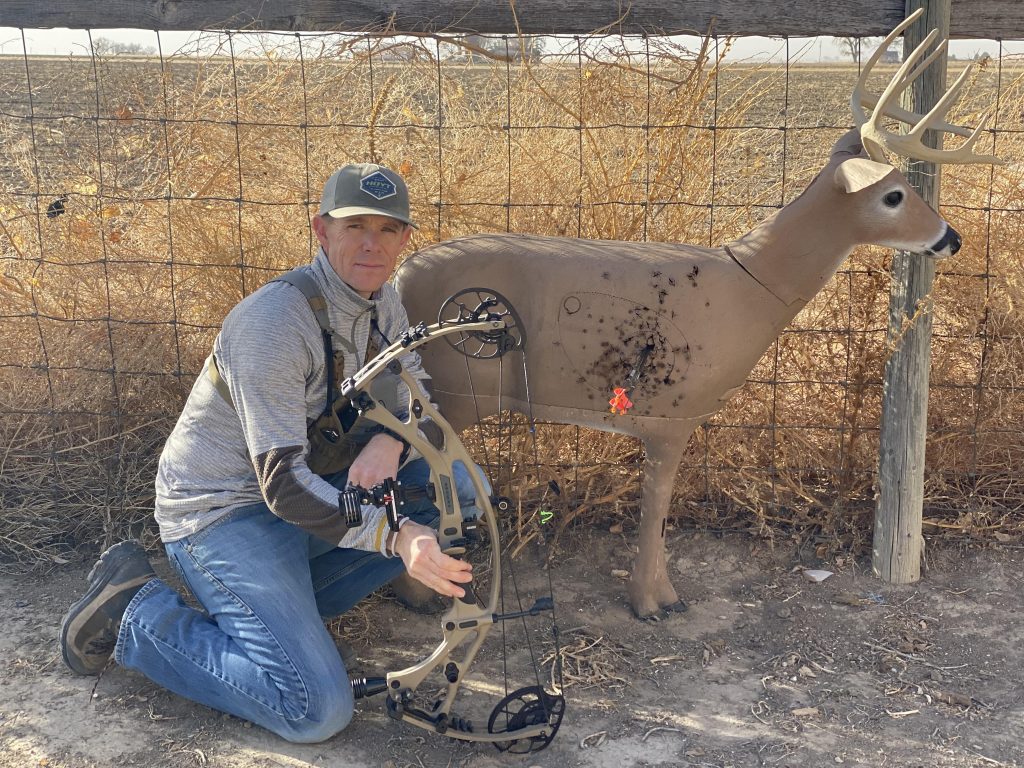I get hyped about new bows, but it was hard for me to believe that I could love a bow — shoot a bow better — than Hoyt’s 2021 Carbon RX-5. In my opinion, this bow was, going into the testing phase of the all-new Carbon RX-7, Hoyt’s best-ever bow build. I slugged it as the greatest whitetail bow ever created in more than one article, and I stand by that statement. The RX-5 was smooth, balanced, loaded with purposeful technologies, and oh so quiet. It was everything a bowhunter could want, and that rig will always hold a special place in my heart.
Could the RX-7 be any better? Let’s find out.

First Impressions
The riser jumped out at me as soon as I pulled the bow from its cardboard shipping box. I’ve tested a pile of Hoyt’s carbon-riser bows over the years, and this was the first that didn’t have snake-like tubes running between the limb pockets. Though still carbon, the riser features a slimmer, more together design. The look is sexy. Despite the fact that there were no obvious cosmetic flaws, my next prominent notice was the new grip design. If there’s one complaint I’ve had with Hoyt bows over the years, it is the grip. Usually, I remove the grip and wrap the riser with a tennis racquet tape grip, but that won’t be the case with the RX-7. Why? The new VitalPoint Grp is perfectly angled, flat-backed, and has a rubber-like texture that promotes an excellent fit and feel. I also took immediate notice of the In-Line Picatinny sight rail, which, if you’re running a sight with a clamping bracket, mounts the sight directly to the face of the riser and eliminates the need for a side-mount bracket and mounting screws. I was excited to put the bow through the paces.
Set Up
Like any bow featuring such purposeful technologies and sporting a price tag north of $1,800, this bow set up like a dream. The limb pockets turned smoothly, no popping or chattering, and accessories mounted as advertised. I wanted to give the In-Line Picatinny sight system a go, so I attached Axcel’s AccuStat II 3-Pin with Axcel Picatinny mount. Sight attachment was flawless, as was that of my rest of choice. If you’ve yet to take advantage of Quality Archery Design’s Integrate Rest Mounting System, you’re doing yourself a disservice. Hoyt adapted this system on its flagships a few years back, and I was thrilled to see it on the RX-7. With this system, you can attach QAD’s UltraRest Integrate MX drop-away to the back face of the riser. A pair of brackets on the rest attached to the Picatinny rail, eliminating the need for a rest mounting bar and attachment screw. If taken advantage of, both sight and rest attachment technology keep overall bow weight down, streamline accessories, and lock them perfectly in place.

Tune
With all accessories mounted, a peep sight installed, and a D-loop with nocking points attached to the string, it was time to tune the bow. Some fault me for this, but it’s worked well for me in the past, and I feel it’s the proper way to achieve the perfect tune. I don’t go straight from the bow press to the paper tuner. Instead, I stand 10 yards from a large foam target and fire close to 100 arrows over two days. Why? First, I want to get a feel for the bow before executing a perfect shot through paper. Sure, I take the time to get things close — make sure the rest is dropping on time and the like — but I want to get a feel for the rig and get any stretch out of the string.
For two days, I shot the RX-7 at 10 yards — both bare and fletched arrows — and on day three, when I shot through paper, my third arrow produced a perfect tear after a bit of rest tinkering. This bow, like the RX-5, tunes like a dream.

I also conducted a speed test with a pair of different shafts during the tuning process. With the bow’s limb bolts turned to max poundage, draw weight on this 70-pound compound was measured at 72.30 pounds with my Luoyer Digital Bow Poundage Scale, and I set my draw length on Hoyt’s new HBX Pro Cam. The first arrow I fried through the chronograph was Easton’s 4MM Axis Long Range (407.3 grain). The arrow, with a 100-grain field point, aluminum Half-Out insert, 4MM MicroLite Nock, and four AAE Hybrid 23 Vanes, hit a speed of 307 fps. I shot three more arrows to confirm the speed, and the choro read the same number each time. After getting a fps rating on the Axis 4MM, I fired a trio of 4MM FMJ (481.5 grain) arrows, built the same as the Axis arrows, and the chronograph read 284 fps each time. Speed doesn’t mean much to me, but this bow offers plenty of it.

The Experience
I changed the letoff from 85 percent to 80 by simply loosening a screw in each cam’s module and sliding the letoff from 85 to 80. The process is super simple. The good news: I noticed little difference between the 85 and 80 percent letoff setting. The draw is a tad stiff at first, but things get a buttery smooth as weight builds and the cams roll over. Padded arms on each cam’s module contact the bow’s inner cable to provide a backwall that isn’t concrete hard nor super spongy. The valley is just right, and being I shoot a hinge and need some valley to let the release fire the bow properly, I appreciated the RX-7’s backwall feel. Now, for the best part. Just like the RX-5, this bow, with only Hoyt’s Short Stop Stabilizer attached, sits in hand like a dream. The innovative accessory mounting, married with the overall build, allows this 30-inch axle-to-axle rig to balance like a bow with more inches between the axles. I love it.

At the shot, the bow is dead in hand and very hushed. With the new riser design, I wasn’t sure if the bow would be as quiet as the RX-5, but it is. One of my favorite features of the RX-5 was its stealthy nature, and the newest member of the RX line followed suit. As for accuracy, I can rave to you about how I stacked fixed, mechanical, and field points together out to 100 yards, but that wouldn’t do you much good. All that lets you know is that the bow was built with accuracy in mind. What you need to do is get to a pro shop and experience just how great this bow shoots and how deadly accurate you can be behind it.
Hoyt RX-7 Specs:
-Axle-to-Axle – 30 inches
-Brace Height – 6 1/4 inches
-FPS (ATA) – 342
-Weight – 3.9 poundsPeak Draw Weights – 40, 50, 60, 65, 70, and 80 pounds
-Draw Length Range – 25-28 and 28.5-30 in half-inch increments
-Colors – Buckskin, Wilderness, Realtree Edge, Kuiu Verde 2.0, Gore Optifade Subalpine, Gore Optifade Elevated II, Black Out, Black Out Cameron Hanes Keep Hammering, Black Out Bone Collector, and Realtree Edge Bone Collector




